Polishing the Brass Tubes on a Vintage NuTone Door Chime
 Monday, January 19, 2015 at 9:03AM
Monday, January 19, 2015 at 9:03AM Many of the finest Door Chimes that NuTone ever produced were made in the late 1930's through the late 1950's. The most sought after model have 3 or 4 long brass tubes and a variety of different decorative covers.
The outstanding sound these chimes produce is unrivaled by later designs. The source of this fantastic sound are the long brass tubes, also called "bells". These bells are made from instrument quality brass tubing, which is specially formulated to produce a long and clear note when they are struck.
We once performed a test on a set of bells from a early 1950's NuTone Chime. Once the last tube was struck, that tube resonated for a full 1-1/2 minutes, which allows the sound to carry throughout the home.
We often rebuild the chime mechanisms for customers; however they usually don't send in their tubes since it would be expensive to do so. Recently I had a project that came in with the tubes and they looked like most old tube sets. They were tarnished and discolored, especially on the bottom ends where they have been touched and bumped into over the years.
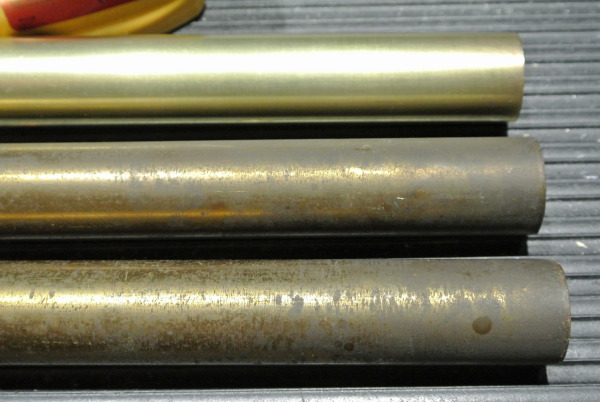
While this set of bells sounded great, they looked bad. I thought it would be interesting to see if they could be brought back to their original finish without ruining their value.
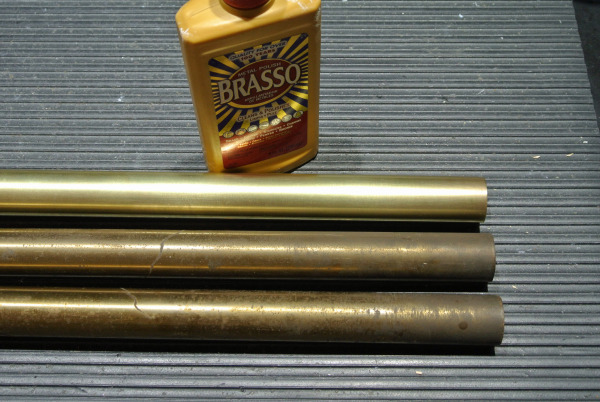
There is a lot of advice available about cleaning and restoring the finish of brass items, but it seemed to me that this is a "less is more" project. I went in search of some Brasso brass cleaner.
There's nothing like some old-fashion elbow-grease to get a project done, and that's exactly what you'll need with the Brasso. You will also need lots and lots of cotton cloths, rubber gloves and about 1 hour per tube.
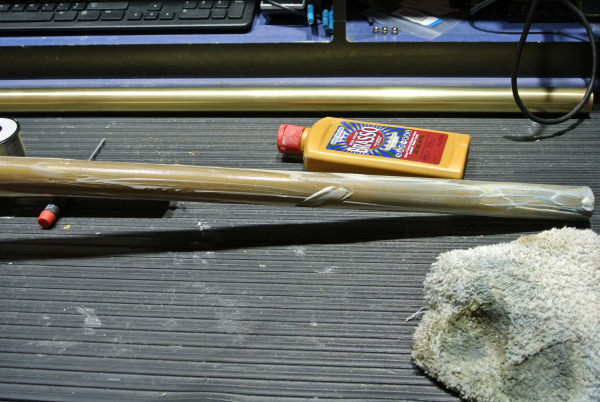
I tried several different methods to clean the tubes including letting the Brasso "soak" on the brass for a while before the rubbing started (it didn't seem to help much).
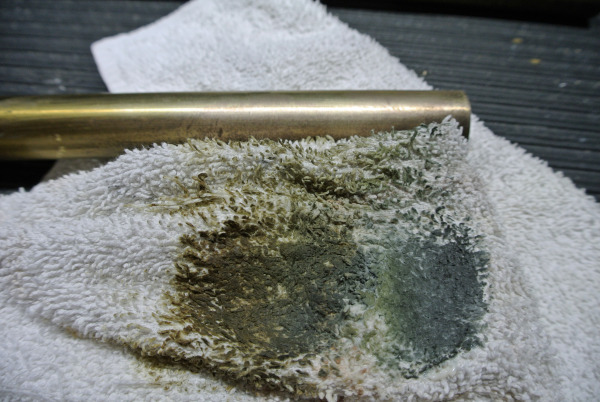
The best method is to simply apply some Brasso to the cloth, rub and polish the tube until the cloth is covered with a green residue, repeat many, many, many, many times. It a good idea to do this in a well ventilated area or outdoors, since the Brasso gives off a strong Ammonia smell.
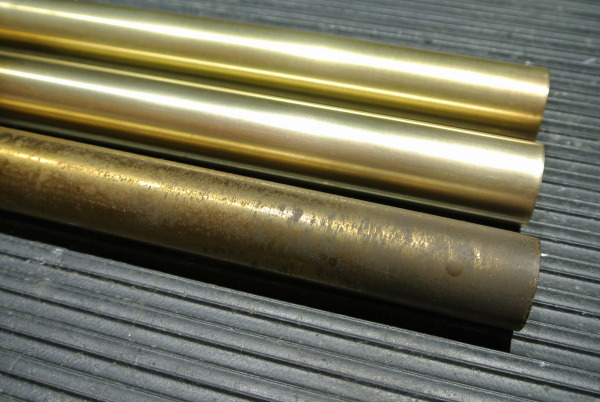
As you can see, the end result is amazing. I've never seen a Vintage set of NuTone long tubes look like this.
The time spent cleaning them is well worth it. Time for everyone who has one of these excellent quality vintage NuTone chime to buy some Brasso and make their chime look as good as it sounds.
Reader Comments (6)
I'm happy to know about how to clean the tubes! Last year my husband and I bought a 1880 farmhouse that we are trying (albeit very slowly) renovating. We have a NuTone chime. I believe, from the little research I've been able to do, it's a 1941 "Drape". I believe I'm also missing a middle tube as it only has two. I want to clean it up a bit. It still kind of chimes, more of a buzzing sound. Do you know where I can find a replacement tube, or what's the best way to go about cleaning the parts inside the cover? It's so dusty up in there.
Hi Sarah,
Congratulations on owning a fine example of a classic NuTone Long Tube Chime.
The best way to clean the base of the chime is to simply vacuum it lightly. If the plungers have become "sticky" and they don't slide easily add 1 drop (just 1) of lighter fluid (the kind you use in an old fashion Zippo lighter) inside the tube that the plunger slides in. Carefully move the plunger back and forth to loosen it up a bit. Care must be used when working on any vintage chime, since there are no replacement parts available you don't want to damage anything. Don't try to remove the solenoids from the chime base.
As for finding the missing tube, you will need to keep checking eBay for someone who's selling a set of tubes, you have to make sure that the tubes you're considering buying are the correct tubes for your chime. Tubes from different periods hang differently from each other. Your tubes have a hanging cord through the top of the tube. If you find a tube that is too long, it can be carefully trimmed off at the bottom to make it the right length. This is best done on a band saw with a fine metal blade.
Best of luck with your chime, if you email me some pictures, I'll post them on the web site
Thanks
Chris
nscompany@msn.com
I am rebuilding my vintage NuTone LA 47 4-tube set and appreciate the tip for cleaning the brass tubes. I repaired one solenoid coil and resoldered the old connections that had become high resistant. Thanks for your help! Al in CT
Hi Al,
As I outline in the article about polishing brass tube, Brasso seems to be the best choice along with lots of elbow grease. . .
Thanks
Chris
Do you put anything on the polished bells to protect them, and keep them from tarnishing again?
Hi Scott,
I don't think that coating the bells is a good idea. You can wipe them with a soft cloth that has some furniture polish on it (like Pledge) to protect them.
Chris